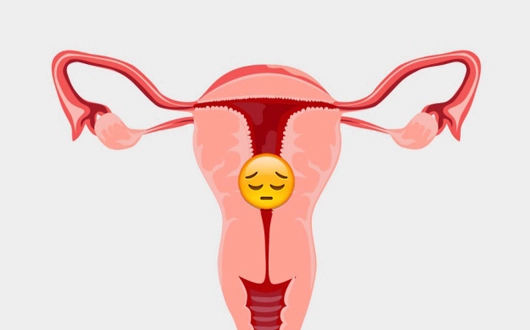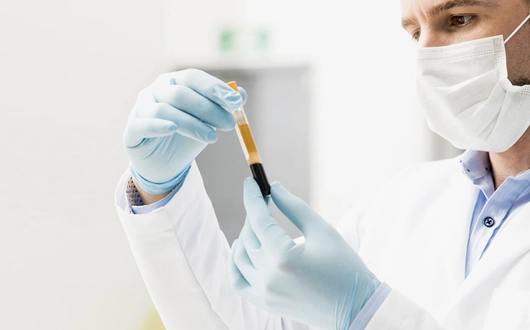
IVF treatment is the process where the female reproductive cell (egg) and the male reproductive cell (sperm) are combined in a laboratory setting to fertilize the egg. After fertilization, the resulting cell, called an embryo, is transferred into the woman’s uterus.
For couples who have decided to have a baby, if pregnancy does not occur after a year of unprotected sexual intercourse, the possibility of infertility is considered, and it is recommended to consult an IVF specialist.
After a consultation with an IVF specialist, the couple will undergo several tests, screenings, and an ultrasound examination. Based on these results, the doctor will provide recommendations, and the couple will decide whether or not to proceed with IVF treatment.
Once the decision is made to start the treatment, the process usually begins after a month of antioxidant and vitamin therapy, with an examination performed on the second or third day of the woman’s menstrual cycle. During this examination, the doctor will decide on the treatment protocol, and the woman will begin medication and hormone therapy to stimulate and mature the eggs. Throughout this approximately 10-12 day period, the woman will be invited to the clinic every 3-4 days for follow-up examinations to monitor the development of the eggs.
Once the eggs have reached the desired size and maturity, the egg retrieval (OPU) procedure is performed. This procedure is done under anesthesia and lasts about 10-15 minutes. The eggs are retrieved painlessly through a thin catheter inserted via the vaginal route. At the same time, a sperm sample is taken from the male partner, without the need for surgery. The eggs and sperm are then combined in a laboratory setting for fertilization. The fertilized cells, now called embryos, are monitored, and once a healthy embryo is created, it is transferred into the uterus. The decision to transfer the embryo fresh or frozen is made based on the doctor’s recommendations. The timing of the transfer depends on this decision. After the transfer, a blood test is done approximately 12 days later to check for pregnancy.
This is a general outline of the IVF treatment process, which is both emotionally sensitive for couples and financially costly. It is important for couples to understand the costs involved and be informed in advance about possible additional costs at the beginning of the treatment. The process can be effectively anticipated and communicated with clear and accurate information by an experienced and specialized doctor.
IVF costs in 2025 vary across different centers in Turkey. This is because several factors affect the cost, including the type of egg-stimulating medications used, their dosage and duration, differences in laboratory equipment, the method of artificial fertilization, whether the embryo is transferred fresh or frozen, and the use of new technologies to improve IVF success rates. The medications used after embryo transfer also contribute to the cost variation.
As of January 2025, the cost of standard IVF treatment in IVF centers in Istanbul ranges from approximately 60,000 TL to 110,000 TL.
To understand and compare the price differences between IVF centers, it is important to know the standard services offered by the centers in advance, along with the costs of technological applications that enhance success. It is also crucial to obtain information on which of these applications may be used for the patient.
The cost of standard IVF treatment and the pricing for services outside of standard IVF procedures can be summarized as follows:
In vitro fertilization (IVF) is one of the most commonly used assisted reproductive technologies for couples facing infertility. So, what are the cost components of IVF, the most promising option for infertile couples? Here is a general overview of the stages involved in IVF treatment, additional therapies used, and their pricing.
A significant portion of the IVF treatment costs is attributed to the hormonal medications used to stimulate and promote egg development and growth. Since the cost depends on the type and dose of medication used, it varies from patient to patient, and therefore, it is not included in the IVF treatment package. This stage’s cost accounts for about 30% to 40% of the total IVF treatment cost.
During the treatment process, regular ultrasound monitoring is performed by the IVF specialist to track the response of the ovaries to the medication and to observe the development of the eggs. The costs for these follow-up ultrasounds are included in the total IVF treatment package.
After ovarian stimulation with medication and maturation of the eggs, the egg retrieval process (OPU) is performed. This surgical procedure is usually done under anesthesia. On the day of egg retrieval, a sperm sample is also collected from the male patient for the laboratory to fertilize the eggs. If the male patient has certain infertility issues, additional procedures for sperm retrieval (Micro-TESE or TESA: surgical sperm retrieval) may be applied, which incur additional costs.
Egg retrieval and non-surgical sperm retrieval are usually included in the IVF treatment package. Micro-TESE or TESA procedures and their costs are not included in the standard IVF treatment price.
In the IVF process, the eggs and sperm are fertilized in a laboratory environment. The embryos are cultured until they reach a certain stage of development. The laboratory process, where the eggs and sperm are combined, requires high-tech equipment and facilities, making it a significant part of the IVF treatment costs. Since the laboratory process is essential, these costs are included in the IVF treatment package offered by clinics. The fertilization method using microinjection is included in the IVF treatment price.
Transferring the developing embryo into the uterus requires an additional surgical procedure and is the final step of the treatment. Since embryo transfer is an indispensable part of the treatment, it is generally included in the IVF treatment package provided by clinics. The embryo transfer procedure is usually done without anesthesia, but in some medical conditions (such as vaginismus),it may be performed under anesthesia. If anesthesia is required for embryo transfer, the cost may vary between clinics and could be priced separately.
In IVF treatment, various additional treatments may be required to increase success depending on the patient's personal condition. Some of the main additional treatments that increase success in IVF are as follows:
Hysteroscopy: One of the most common additional treatments that increase IVF success is hysteroscopy, which is performed to eliminate uterine problems that may hinder pregnancy.
Hysteroscopy is a general term for surgical interventions performed on the uterus under anesthesia. These procedures are typically used for removing uterine septum, correcting uterine shape abnormalities (T-shaped uterus, Y-shaped uterus, etc.),and clearing polyps and fibroids from the uterus, which can prevent pregnancy. Since these procedures are determined based on the patient's needs, they are not included in the IVF treatment fees. The cost of hysteroscopy procedures is determined by the doctor and hospital.
Ovary Pooling: IVF ovary pooling (embryo pooling) is a treatment method where multiple egg retrieval procedures are performed from one patient to reach the maximum number of eggs. It is applied especially in IVF patients with low ovarian reserve. The cost of ovary pooling is calculated based on the single egg retrieval procedure fee set by the clinic.
Embryo Freezing (Uterine Rest): After ovarian stimulation in IVF treatment, once the embryo is formed, embryo freezing is performed, and the process of preparing the uterus for embryo transfer is called uterine rest. The uterine rest process is known to increase IVF implantation rates, especially in patients with chocolate cysts (endometriosis) and polycystic ovary disease. During this process, if necessary, genetic tests on the embryo may also be conducted. The price of uterine rest varies by clinic and may or may not be included as an extra charge.
PRP Application: Ovarian PRP (ovarian rejuvenation) is a supportive technique where platelet-rich plasma from the patient's own blood is injected into the ovarian tissue to improve ovarian function and the quantity/quality of eggs. This egg rejuvenation method is mainly applied to patients with low ovarian reserve. The cost of ovarian PRP varies between clinics and is applied separately from IVF treatment fees. PRP Egg Quality Improvement.
Endometrial (Uterine) PRP: Endometrial PRP is a supportive technique where platelet-rich plasma from the patient's own blood is injected into the uterine lining to increase its thickness. This method aims to improve embryo implantation chances, especially in patients with repeated implantation failure. Endometrial PRP is also applied in patients with thin uterine linings. Both of these PRP methods are surgical interventions.
Exosome Therapy: In IVF treatment, exosome therapy is a new method used to support the embryo's development and implantation process. Exosome therapy is mainly used in women with low ovarian reserve. By increasing intercellular communication through small protein microparticles produced from stem cells or blood, exosome therapy supports the acceptance of the embryo by the uterine tissue. Due to the increased embryo quality, high implantation rates, and its proximity to the natural process, it has become a preferred supportive method in IVF treatments. Pricing is similar to PRP applications and is an important cost factor.
IVF Serum Therapy: In cases of recurrent pregnancy loss, immune-regulating therapies may be required for female patients. These treatments are collectively referred to as serum therapy and are determined on a case-by-case basis, so they are not included in the IVF treatment costs. Compared to other methods that increase IVF success, serum therapy is a much lower-cost option.
IVF treatment, like all medical fields, is constantly evolving and developing with technological advancements. Technological developments such as artificial intelligence-assisted methods for selecting eggs and sperm, genetic testing on embryos to identify healthy ones, technologies that support the formation of higher-quality embryos, and various agents that strengthen embryo implantation are generally referred to as 'Technologies That Increase Success in IVF Treatment.'
In recent years, significant progress has been made in IVF treatments with the development of artificial intelligence. Success rates in clinics that apply these advancements have increased significantly. So, what are these IVF technologies, and how are their prices determined:
Embryo Genetic Testing (PGT): After embryo formation in IVF treatment, a biopsy is taken from the embryo to determine if it is genetically healthy, and embryo genetic tests can reveal this. These tests also help exclude genetic disorders that need to be avoided from the embryo. Since genetic testing of embryos is performed by genetic centers and is determined based on individual patient needs, it is not included in the IVF treatment fees provided by clinics. The cost is calculated per embryo, and the number of embryos tested determines the price (genetic testing on a single embryo is not very costly, but it is performed on as many embryos as the couple deems necessary to increase IVF success).
Artificial Intelligence Applications for Embryo and Sperm Selection: Artificial intelligence applications are primarily used in IVF for embryo and sperm selection. AI technology can select the highest quality embryos and the most motile sperm. This cutting-edge method is applied in clinics that use AI technology in IVF treatments. Whether the cost is included in IVF treatment fees depends on the clinic.
Piezo-Electric IVF Method: Piezo-electric IVF (piezoelectric egg activation) is used in embryo laboratories to increase fertilization success by injecting sperm into the egg in a more precise and controlled manner. This high-tech method has become increasingly important in challenging IVF cases, as it provides high success rates. Piezoelectric egg activation is applied as needed, so it is not included in the IVF treatment fees provided by clinics. Although it is not a major cost factor, it is a highly preferred method due to its effectiveness and reasonable cost in relation to IVF success rates.
Embryo Glue: Embryo glue is a special culture fluid used to increase embryo implantation rates. This fluid helps the embryo become more compatible with the uterine environment during transfer and supports its better adhesion to the uterine lining afterwards.
Embryo glue is particularly effective for older women, frozen embryo transfers, and patients with repeated IVF failures. The application is done according to case requirements and is not included in IVF treatment prices. It is not a major cost item, but due to its efficacy and reasonable cost, it is a highly preferred method.
Embryoscope: Embryoscope is an advanced embryo culture device that contains a high-resolution camera system used in IVF treatments. This device provides the necessary culture environment for the embryos' development and allows continuous monitoring of their growth. Depending on case requirements, it is not included in the IVF treatment prices provided by clinics, and it is the most expensive among the supportive technological methods that increase IVF success rates.
All the IVF stages, additional treatments, and technological methods that increase IVF success have specific costs. Since many of these procedures, tools, materials, and technologies are imported, fluctuations in exchange rates directly affect the IVF treatment prices.
The IVF treatment process is not only an emotionally sensitive period for couples but also a financially challenging one. During this process, it is crucial that an experienced doctor thoroughly assesses the necessary steps in the initial evaluation and clearly communicates the associated costs to the patients from the beginning.
In some cases, additional treatments and methods recommended by the doctor may be applied after a certain stage. In such situations, patients should be informed in advance about what might be required in the upcoming process. At this point, the doctor's experience and expertise are essential for providing accurate information about potential additional costs, enabling patients to plan accordingly.
It is important to remember that the additional treatments and procedures offered to patients are necessary to increase the success rate of IVF treatment, and they are crucial for the couples in their journey to parenthood. Standard IVF treatment methods, applied in a one-size-fits-all package, often fall short, especially in cases of repeated IVF failures, embryo implantation failures, or recurrent pregnancy loss.
Since the need for additional treatments and technological methods that enhance IVF success varies from patient to patient, they are not included in the prices of standard IVF treatment packages. What patients need to focus on here is following the correct treatment plan tailored to them, with the appropriate procedures recommended by the doctor, to successfully achieve pregnancy.
In Turkey, IVF treatment is not covered by private insurance. In public institutions, IVF is provided if the necessary criteria are met (such as both fallopian tubes being blocked, low egg reserve, or severe sperm issues).
Compared to countries like the United States, the United Kingdom, and Germany, IVF treatment prices in Turkey are lower. As a result, factors such as affordable costs and high success rates make Turkey a highly preferred destination for IVF treatment.
In conclusion, IVF treatment, including both the main stages and supportive additional treatments, is an expensive procedure for patients. However, with the technological infrastructure of the clinic, an experienced laboratory, and knowledgeable doctors, it can be planned from the outset to ensure that patients achieve pregnancy with the least possible cost and effort
Dear couples and readers, you can review our topics below for all your questions about IVF treatment and infertility and answers to any questions you may have. All you wonder about IVF, infertility and gynecological diseases...

In vitro fertilization, also known as in vitro fertilization, is the process of combining eggs and sperm in a laboratory environment and transferring the resulting embryo to the mother's uterus.

When success is expressed as pregnancy rate, it is generally known to be inversely proportional to increasing age. As the woman's age increases, the success rate of IVF decreases.

The AMH hormone, which indicates low egg reserve, is secreted from preantral egg cells, called precursor egg cells, in the ovarian tissue of women.

The use of PRP in the field of reproductive medicine has increased and become popular. Low ovarian reserve, menopause and endometrium (inner sheath of the uterus) have become new areas where PRP is used.